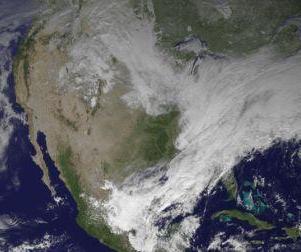China destroyed six tonnes of smuggled ivory to protect declining elephant population

China destroyed more than six tonnes of smuggled elephant’s ivory in Guangdong province on 6 January 2014. The move signalled that China is willing to play a greater role in protecting dwindling elephant populations.
It marked the third significant ivory crush globally over the past six months. In June 2013, the Philippine government crushed more than five tonnes of ivory, and in November 2013 the U.S. government crushed almost six tonnes.
China’s move was in line with the tentative steps that it had taken towards playing a greater role in protecting wildlife outside its borders.
In January 2013, China led an international task force of law-enforcement officers from nine countries aimed at cracking down on wildlife crime syndicates. A month long campaign resulted in the seizure of 6.5 tons of ivory as well as other animal parts.
At a global conservation conference in March 2013, China co-sponsored with the U.S. measures to increase the level of protection afforded to more than 40 animal species. These 40 animal species are predominantly threatened by Chinese diners.
Amongst other steps, China is implementing its comprehensive National Ivory Action Plan in consultation with the CITES Standing Committee. Also, China led the first cross-continent wildlife enforcement effort known as Operation Cobra.
However, China has been reluctant to move against legal markets for the sale and trade of wild animals in China. State-sanctioned ivory engravers each year receive an allocation that China legally bought from a handful of African nations in 2008.
A study by the Convention on International Trade in Endangered Species of Wild Fauna and Flora (CITES) in 2012 found that China is the only country in East Asia where demand for ivory is expanding in line with household incomes.
16th Conference of the Parties to the Convention on International Trade in Endangered Species of Wild Fauna and Flora (CITES CoP16).

It was held in Bangkok in March 2013, to address the threats posed to wildlife, to people and their livelihoods through poaching and smuggling, especially with respect to the African elephant.
The figures released through the CITES programme Monitoring the Illegal Killing of Elephants (MIKE) showed that an estimated 22000 elephants were illegally killed in 2012 in Africa.
The data compiled from 42 MIKE sites across 27 African countries, demonstrate that current levels of elephant poaching in Africa remain far too high. It could soon lead to local extinctions if the present killing rates continue.
The situation is particularly acute in Central Africa, where the estimated poaching rates are twice the continental average.
CITES Parties recognized the need for targeted and time-bound actions to be undertaken along the entire illegal ivory trade chain and to tackle both supply and demand. The ivory trade chain extends from African range States to transit nations and countries that are the final destinations and markets.
The CITES Standing Committee further reinforced the collective efforts taken by CITES Parties by agreeing with the eight key States in Africa and Asia that are part of the illegal ivory trade chain on the preparation of national ivory action plans. This action plan will contain all the details of the urgent measures the eight key States will undertake to combat illegal trade in ivory.
Image credit: 1) Elephant-Peter H. Wrege at Wikipedia, 2) Ivory -Jastrow at Wikipedia


